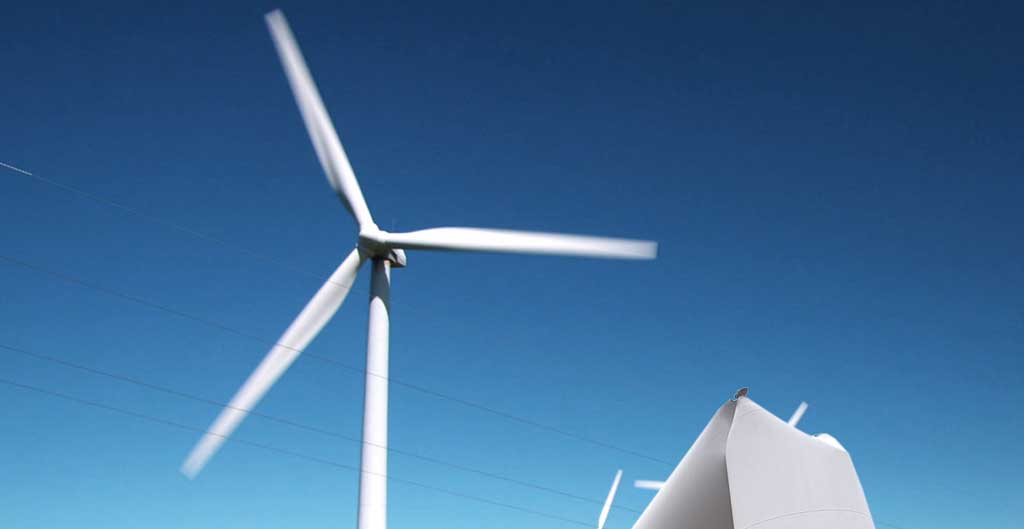Competitive Bidding in Wind Energy: What’s Wrong?
By EPR Magazine Editorial August 12, 2017 2:09 pm IST
By EPR Magazine Editorial August 12, 2017 2:09 pm IST

Competitive bidding is being considered as a blow for wind power sector. Let’s see what the industry has to say.
Renewable energy (RE) sector in India has witnessed exponential growth during the past few years and is all set for a quantum leap with the government’s ambitious plan of integrating 175 GW of RE into India’s power grid by 2022. However, recent trend of falling wind energy tariffs raised concerns over the long-term viability of certain RE projects. The recent report on Karnataka discoms barred from buying more wind power has stunned the industry.
Wind power tariffs in India are now decided by competitive bidding. Wind power tariffs hit a record low of ` 3.46 per kilowatt hour (kWh) in February during a 1GW tender by state-run Solar Energy Corp. of India (SECI).
Aggressive price that the renewable sector has been witnessing in competitive bidding is really a big blow to the wind power sector, opines Dr Sanjiv Kawishwar, Sr. Vice President, ReGen Powertech. He expressed his concern by saying, “Tariff was re-discovered in a different way that worked for other RE sources but it may not sustain for wind energy and time will decide its sustainability and suitability. Pressure on returns across the value chain will increase and therefore consolidation of market towards independent power producers may take place.”
Lower financing charges and economical technological options may reduce generation cost but the size of portfolios will determine the fate of a project, acknowledges Kawishwar. He adds, “Strength of techno-financial restructuring to make the projects viable before execution will decide the sustainability of the bidding process. Individual investors may not sustain such pressures and hence may not be investing in wind power.”
As a procurement mechanism, reverse auctions are specifically considered to be effective in increasing cost efficiency and discovering the least price for generating electricity from a particular technology, due to their competitive nature. In India, competitive means of procuring electricity generated from RE has been mandated in the Electricity Act of 2003 for appropriate state commissions. The main objective for doing so is to reduce the overall cost of procurement of power for the distribution licensees and ultimately the consumer.
State-level tariffs are determined on a cost-plus basis which may result in inefficient cost of generation, due to asymmetric information on market and technology conditions, said Kailash Lal Tarachandani, CEO, Inox Wind Ltd. He observed that this can result in difficulty in realistically benchmarking input assumptions such as Capacity Utilisation Factor (CUF), thus resulting in a higher price to be paid by the consumer and inefficient utilisation of the finite resource.
Improvements in technology such as benefits accruing from installing taller turbines with larger rotor diameters, are not captured in the actual performance or indexing parameters that are used to calculate the costs, Tarachandani adds.
Competitive bidding is ‘definitely positive’Tarachandani said, “The entire industry is taking a turn and along with the changing tax and regulatory structure – it will take some time to get settled. There are few positive aspects of certainty of power purchase agreement (PPA) and payment from discoms which this mechanism has brought which may set off some part of impact happened due to lower tariff.”
He further claims, “We being the most cost competitive in the industry, see this as a golden opportunity to expand our business share. Let this mechanism get filtered and settled down. It will definitely bring more demand of wind power, healthier DISCOMs, certainty of PPA and lesser lead time in payment from state utilities. The only thing needed is to bring invention to further cut down the cost of generation.”
Tanti of Suzlon Group also expects that apart from centralised bidding, states to start auctions in the future. He says, “Tariffs will continue to be competitive and will expand the demand further, resulting in growth of volumes.” However, he acknowledges, there will be some pressure on the margins which will get mitigated due to the increase in volumes.
“We look to mitigate the pressure through introduction of new technology. Our R&D efforts are focused on lowering the LCoE by 20 per cent in the next five years with new turbines,” Tanti informs.
We use cookies to personalize your experience. By continuing to visit this website you agree to our Terms & Conditions, Privacy Policy and Cookie Policy.